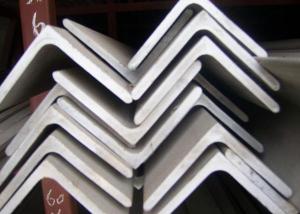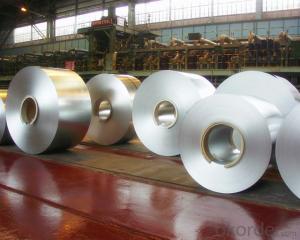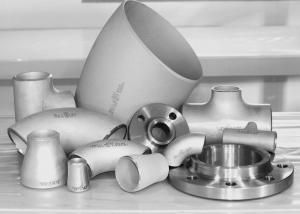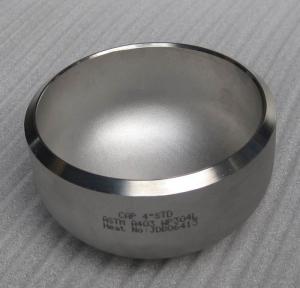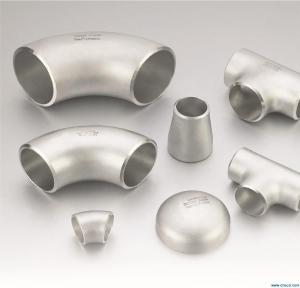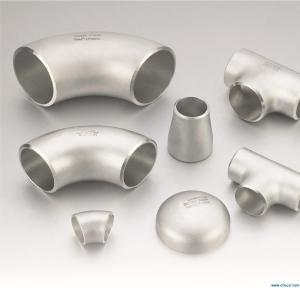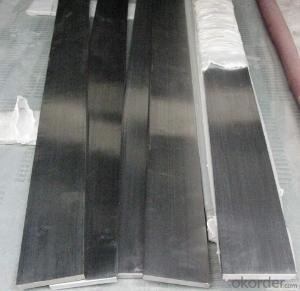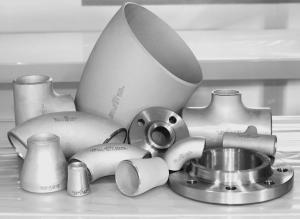Flat Stainless Steel with High Quality for Construction
- Loading Port:
- China main port
- Payment Terms:
- TT or LC
- Min Order Qty:
- 50 m.t.
- Supply Capability:
- 10000 m.t./month
OKorder Service Pledge
OKorder Financial Service
You Might Also Like
Specification of Flat Stainless Steel with High Quality for Construction:
Commodity: Hot Rolled Steel Flat Bar
Standard: GB;JIS
Material: Q195-Q235
Brand name: FLATSPACE
Origin place: China
Thickness: 3mm-30mm
Width:20mm-200mm
Length: Max 12m
Certification: SGS/BV
Chemical composition of Q235
Alloy No | Grade | Element(%) | ||||
C | Mn | S | P | Si | ||
Q235 | B | 0.12—0.20 | 0.3—0.7 | ≤0.045 | ≤0.045 | ≤0.3 |
Physical properties of Q235
Alloy No | Grade | Yielding strength point(Mpa) | Tensile strength (Mpa) | Elongation after fracture(%) | ||||||
Thickness (mm) | Thickness (mm) | |||||||||
≤16 | >16--40 | >40--60 | >60--100 | ≤16 | >16--40 | >40--60 | >60--100 | |||
≥ | ≥ | |||||||||
Q235 | B | 235 | 225 | 215 | 205 | 375--500 | 26 | 25 | 24 | 23 |
Usage/Applications of Flat Stainless Steel with High Quality for Construction:
Widely used for construction, Machinery manufacturing, Iron tower steel structure, Shipbuilding; Steel grating, Staircase, Bridge, Viaduct, Railway spare parts, Boilers making etc.
Production Flow of Hot Rolled Flat Steel with High Quality for Sale:
The steel flat bar is made through three processes:
1.Feeding the material: Feeding the row material (the steel plate) to Slitting Line.
2.Slitting:The steel plate would be slitted into expected width by lengthways cutter.
3. Leveled and cutting: The plat bar would be ground into level by the grinder and then cut into required length.
Packaging & Delivery of Flat Stainless Steel with High Quality for Construction:
1.Packaging Details: The Steel Flat Bars are packed in bundles and loaded in 20 feet/40 feet container, or shipped by bulk cargo ,also we can do as customer's requirements.
2.Delivery Details:30~45 days upon the receipt of buyer payment by T.T. or L/C.
3. Marks:
Color marking: There will be color marking on both end of the bundle for the cargo delivered by bulk vessel. That makes it easily to distinguish at the destination port.
Tag mark: there will be tag mark tied up on the bundles. The information usually including supplier logo and name, product name, made in China, shipping marks and other information request by the customer.
If loading by container the marking is not needed, but we will prepare it as customer requests.
FAQ:
Q1: Why buy Materials & Equipment from OKorder.com?
A1: All products offered byOKorder.com are carefully selected from China's most reliable manufacturing enterprises. Through its ISO certifications, OKorder.com adheres to the highest standards and a commitment to supply chain safety and customer satisfaction.
Q2: How do we guarantee the quality of our products?
A2: We have established an advanced quality management system which conducts strict quality tests at every step, from raw materials to the final product. At the same time, we provide extensive follow-up service assurances as required.
Q3: How soon can we receive the product after purchase?
A3: Within three days of placing an order, we will begin production. The specific shipping date is dependent upon international and government factors, but is typically 7 to 10 workdays
Images:

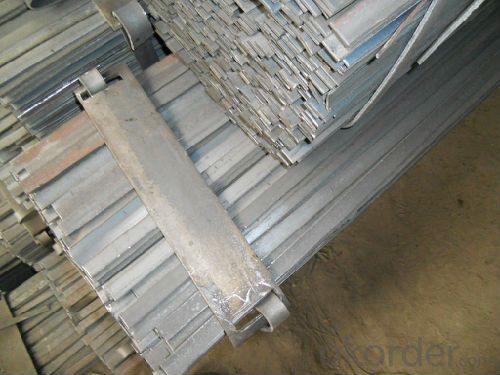
- Q:Can stainless steel flats be heat treated?
- Indeed, it is possible to subject stainless steel flats to heat treatment. The process entails elevating the material's temperature to a specific degree and then rapidly cooling it in order to modify its characteristics. The objective of heat treatment is to enhance the stainless steel's hardness, strength, and resistance to corrosion. Multiple heat treatment methods exist, including annealing, tempering, and quenching, each with its own unique temperature and cooling prerequisites for attaining the desired outcomes. Heat treatment serves as a vital stage in the production of stainless steel flats, as it enhances their mechanical properties and renders them appropriate for a diverse range of applications.
- Q:What are the weight and load-bearing capacities of stainless steel flats?
- The weight and load-bearing capacities of stainless steel flats can vary based on several factors, including the grade and thickness of the stainless steel, as well as the specific dimensions and design of the flat. Stainless steel flats are widely recognized for their strong and durable qualities, making them suitable for a wide range of uses. However, it is crucial to carefully consider the requirements and specifications of the project in order to determine the most appropriate stainless steel flat to utilize. Stainless steel flats are available in various grades, such as 304 or 316, which offer distinct mechanical properties and resistance to corrosion. The weight-bearing capacity of stainless steel flats is primarily influenced by the grade of stainless steel used, with higher grades generally possessing greater strength and load-bearing capabilities. The thickness of the stainless steel flat also plays a significant role in determining its weight-bearing capacity. Thicker flats typically have higher load-bearing capacities due to the added strength and stability they provide. Furthermore, the design and dimensions of the flat, including its width, length, and shape, can impact its load-bearing capacity. Flats with wider or longer dimensions generally possess greater weight capacities as a result of the increased surface area and support they offer. To determine the specific weight and load-bearing capacities of stainless steel flats for a particular application, it is advisable to consult engineering or manufacturer specifications. These specifications will provide detailed information about the maximum load that a specific stainless steel flat can safely support. Ultimately, it is essential to consider all relevant factors and seek professional advice to ensure that the chosen stainless steel flat meets the necessary weight and load-bearing requirements for a given project.
- Q:What are the different types of surface textures for stainless steel flats?
- There are several different types of surface textures available for stainless steel flats, each with its own unique characteristics and applications. Some of the most common surface textures for stainless steel flats include: 1. Mill Finish: This is the standard finish produced by the steel mill. It has a smooth, slightly reflective surface with no additional treatment or texture. 2. Brushed Finish: Also known as satin finish, this texture is achieved by brushing the stainless steel surface with a fine abrasive material. It creates a distinctive linear pattern that is visually appealing and helps to hide scratches and fingerprints. 3. Mirror Finish: This is the most reflective surface texture available for stainless steel flats. It is achieved by polishing the surface to a high shine, resulting in a mirror-like appearance. Mirror finish is often used in architectural applications and decorative pieces. 4. Patterned Finish: There are various patterned finishes available for stainless steel flats, such as diamond, linen, or leather grain. These textures are created by embossing or rolling the stainless steel sheet with a patterned roller, giving it a textured appearance. Patterned finishes are commonly used in elevator doors, wall panels, and decorative elements. 5. Bead Blasted Finish: This texture is achieved by blasting the stainless steel surface with fine glass beads or ceramic particles. It creates a uniform, non-reflective matte finish that is smooth to the touch. Bead blasted finish is often used in applications where a low-glare surface is desired, such as appliances, kitchen equipment, and architectural elements. 6. Etched Finish: Etching is a process that creates a pattern or design on the stainless steel surface by selectively removing a thin layer of material. It can create intricate designs, logos, or textures on the flat surface. Etched finishes are commonly used in signage, nameplates, and decorative pieces. These are just a few examples of the different types of surface textures available for stainless steel flats. The choice of texture depends on the desired aesthetic appearance, functional requirements, and specific application of the stainless steel flat.
- Q:Can stainless steel flats be used in pharmaceutical manufacturing?
- Pharmaceutical manufacturing can indeed utilize stainless steel flats. The reason behind this preference lies in the exceptional resistance to corrosion, durability, and ease of cleaning that stainless steel offers. Its suitability extends to various pharmaceutical procedures like mixing, blending, granulation, and drying. In fact, stainless steel flats frequently find themselves employed in the creation of equipment and vessels such as tanks, reactors, mixers, and trays, which directly interact with pharmaceutical products. Moreover, stainless steel flats are capable of enduring high temperatures while maintaining their structural integrity, rendering them ideal for pharmaceutical manufacturing applications that involve sterilization or high-temperature processes. All in all, stainless steel flats represent a reliable and extensively utilized material within the pharmaceutical industry.
- Q:Are stainless steel flats suitable for the manufacturing of agricultural equipment?
- Yes, stainless steel flats are suitable for the manufacturing of agricultural equipment. Stainless steel is a versatile and durable material that offers several advantages for agricultural applications. Firstly, stainless steel is highly resistant to corrosion, which is essential in agricultural environments where equipment is often exposed to moisture, chemicals, and other corrosive substances. This resistance to corrosion ensures that the equipment remains in good condition for longer periods, reducing maintenance costs and increasing its lifespan. Additionally, stainless steel has excellent strength and toughness, making it suitable for heavy-duty agricultural machinery. It can withstand high loads, impacts, and vibrations without deformations or fractures, ensuring the equipment's stability and reliability in demanding agricultural operations. Stainless steel also offers hygienic properties, which are crucial for equipment used in food processing, storage, or handling. It is easy to clean, non-porous, and resistant to bacterial growth, ensuring that the agricultural equipment meets the necessary sanitary standards. Furthermore, stainless steel has good heat resistance, which is beneficial for agricultural equipment that operates under high temperatures or is exposed to intense heat sources. It can withstand thermal expansion and contraction without losing its structural integrity, ensuring the overall performance and safety of the equipment. Lastly, stainless steel is a sustainable choice for agricultural equipment manufacturing. It is recyclable, reducing the environmental impact and allowing for the reuse of materials in the future. Overall, stainless steel flats are highly suitable for the manufacturing of agricultural equipment due to their corrosion resistance, strength, hygiene, heat resistance, and sustainability. These qualities make stainless steel a reliable and long-lasting material that can withstand the harsh conditions and demands of the agricultural industry.
- Q:Can stainless steel flats be used in the transportation industry?
- Yes, stainless steel flats can be used in the transportation industry. Stainless steel is a versatile and durable material that offers excellent resistance to corrosion, making it ideal for various transportation applications. Stainless steel flats can be used in the construction of vehicles, such as ships, airplanes, trains, and automobiles, where they are commonly used for structural components, body panels, and various other parts. Additionally, stainless steel flats are also used in the manufacturing of transportation equipment, such as trailers, containers, and railings. The high strength-to-weight ratio of stainless steel flats makes them suitable for these applications as they provide both strength and durability while minimizing the overall weight of the transportation equipment. Moreover, stainless steel flats can withstand extreme temperatures, making them suitable for use in both hot and cold climates. Overall, stainless steel flats are an excellent choice for the transportation industry due to their corrosion resistance, strength, durability, and versatility.
- Q:Are stainless steel flats suitable for the manufacturing of storage tanks?
- Yes, stainless steel flats are suitable for the manufacturing of storage tanks. Stainless steel is highly resistant to corrosion, making it an ideal material for storing various substances, including liquids and gases. Its durability and strength ensure the tanks can withstand high pressure and harsh environments, making them suitable for a wide range of industries, such as oil and gas, chemical, and food processing. Additionally, stainless steel is easy to clean, ensuring proper hygiene standards can be maintained in storage tank applications. Overall, stainless steel flats provide the necessary qualities required for the manufacturing of storage tanks, making them a suitable choice for this purpose.
- Q:Can stainless steel flats be used in medical applications?
- Yes, stainless steel flats can be used in medical applications. Stainless steel is known for its excellent corrosion resistance, durability, and biocompatibility, making it suitable for various medical devices, equipment, and implants. It is commonly used in surgical instruments, orthopedic implants, dental tools, and medical equipment where high strength and hygiene are required.
- Q:What are the different grades of stainless steel flats?
- The different grades of stainless steel flats include 304, 316, 430, and 201.
- Q:What are the sanitary properties of stainless steel flats?
- Stainless steel flats have several sanitary properties that make them ideal for various applications. Firstly, stainless steel is non-porous, which means it does not absorb or retain moisture, bacteria, or other contaminants. This property makes stainless steel flats highly resistant to bacterial growth and makes them easy to clean and sanitize. Secondly, stainless steel is highly resistant to corrosion and rust. This characteristic ensures that the flats remain in good condition even in harsh environments, such as those with exposure to water, chemicals, or high temperatures. The absence of corrosion or rust further enhances the sanitary properties of stainless steel flats, as it prevents the formation of pits, cracks, or crevices that can harbor bacteria. Additionally, stainless steel is a smooth and non-reactive material. It does not react with most chemicals or food substances, making it safe for use in food and beverage processing industries. The smooth surface of stainless steel flats also makes it difficult for bacteria to adhere, reducing the risk of contamination. Moreover, stainless steel is highly durable and long-lasting. Its strength and resistance to wear and tear ensure that the flats can withstand rigorous cleaning and sanitizing procedures without deteriorating or losing their sanitary properties. In conclusion, stainless steel flats possess excellent sanitary properties due to their non-porous nature, resistance to corrosion and rust, non-reactive surface, and durability. These properties make stainless steel flats a preferred choice in various industries, including food processing, pharmaceuticals, healthcare, and water treatment, where cleanliness and hygiene are of utmost importance.
1. Manufacturer Overview |
|
|---|---|
| Location | |
| Year Established | |
| Annual Output Value | |
| Main Markets | |
| Company Certifications | |
2. Manufacturer Certificates |
|
|---|---|
| a) Certification Name | |
| Range | |
| Reference | |
| Validity Period | |
3. Manufacturer Capability |
|
|---|---|
| a)Trade Capacity | |
| Nearest Port | |
| Export Percentage | |
| No.of Employees in Trade Department | |
| Language Spoken: | |
| b)Factory Information | |
| Factory Size: | |
| No. of Production Lines | |
| Contract Manufacturing | |
| Product Price Range | |
Send your message to us
Flat Stainless Steel with High Quality for Construction
- Loading Port:
- China main port
- Payment Terms:
- TT or LC
- Min Order Qty:
- 50 m.t.
- Supply Capability:
- 10000 m.t./month
OKorder Service Pledge
OKorder Financial Service
Similar products
New products
Hot products
Related keywords










